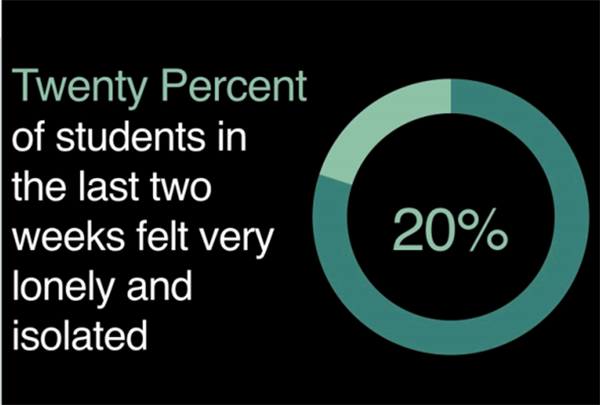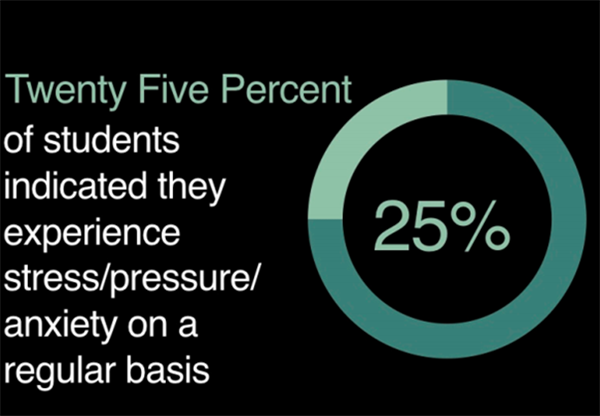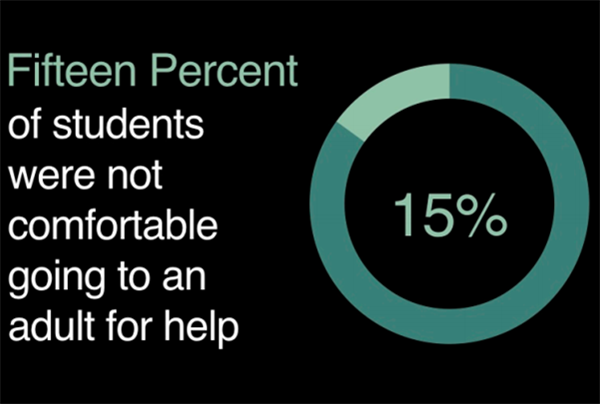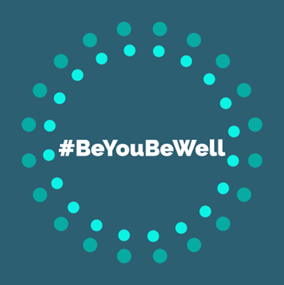- NJASA
- Community Corner June 2021
-
#BeTheLight: One Superintendents Journey to Save Lives
Youth in Crisis
Melissa was a precocious, funny, and beautiful girl, loved by a large family full of laughter and belonging. By 8th grade, however, Melissa experienced what many preteens experience - teasing, arguments, bullying - middle school social strife. Some consider it a rite of passage. Others consider it symptomatic of a national crisis. Melissa’s challenges continued in high school. She struggled to connect. Perhaps it was a phase; perhaps it was the environment; perhaps something a new start could fix. A change in high schools presented similar issues. Melissa had been experimenting with drugs for a while, which further altered her social choices and progressed to addiction. Whether her drug use was to escape, forget, ignore, or indulge, is unclear. The summer after she graduated high school, before fully turning a more positive corner, Melissa died of an overdose.That fall, there was an empty seat at Brookdale Community College in which a beloved daughter, granddaughter, cousin, friend, and Joseph Isola’s niece should have been sitting. There remains a hole in the lives of everyone who surrounded Melissa.
Both state and national data paint a grim picture of trends in mental health among teens and young adults. Increasingly, adolescents and teens report alarming rates of depression, anxiety and suicidal thoughts. In 2017, 100 documented suicides occurred among 15- to 24-year-olds in New Jersey, the highest number since the 1990s. This increase was led by a spike in deaths among young women, who historically take their lives at a lower rate than young men, and a rise in suicide among youth aged 10-18. At the same time, young people’s access to mental health services is severely limited. According to the National Alliance on Mental Illness, in 2016, approximately half of youth aged 6-17 with a diagnosed mental health disorder did not receive treatment.
On a local level, similar mental health issues have been articulated by youth themselves. In early 2018, a survey was distributed to all students enrolled in the Freehold Regional High School District. Twenty percent of students completing that survey reported feeling very lonely or isolated in just the two weeks prior to the survey, while 25% of students indicated that they experienced stress/pressure/anxiety on a regular basis. Perhaps most worryingly, 15% of students stated that they were not comfortable going to an adult for help. These statistics suggest that a significant portion of our students are living in the shadows, suffering from poor mental health, and quite often, doing so in silence.



Commitment Beyond Municipal Boundaries
In its most recent strategic plan, the Howell Township Public School District updated a long-standing goal area of community interaction. Expanding their conceptualization of community, Howell Township Public Schools (HTPS) defined the local, regional, and global community as sources of influence and areas in need of our influence. HTPS committed to interacting with the community, near and far, in an effort to learn, grow, and support all learners, all educators, and solve all needs.As part of that commitment, I had the opportunity to participate in the NJSBA Task Force on Mental Health Services in Public Schools. That work led to a deeper understanding of the pervasive, persistent, and preeminent challenge of mental health facing our communities. Melissa’s story, sadly, is not a vignette. Like a cruel twist on the Hero with a Thousand Faces, Melissa was one face in the tragedy of thousands of faces... millions of faces. Although this could be overwhelming to the point of defeating, my personal loss offered a sobering, urgent insight: saving just one of those faces from tragedy would mean everything. The NJSBA Task Force offered me the realization that I have access to a vast network of capable, like-minded, human helpers who are all willing to shine a light into the deepest corners to find those who need help. The influence of others offered me the confidence and agency that saving the lives of many was possible if many in a network of support would shine their lights to look for just one.
During my time on the NJSBA Task Force, I became aware of work that had taken place in Mercer County on the topic of mental health. I realized that, representing 60 districts, the Monmouth County superintendents had the potential to be a massive force for positive change. A committee was assembled. The speed at which they came together was only outmatched by their commitment to the work. The first meeting started with an unintentional sharing of challenges and traumas experienced by every member of that committee or their extended family. The gravity and closeness of those experiences solidified the nature and urgency of a shared mission:
Through collaboration with member districts, the Monmouth County Schools Partnership for Wellness strives to enhance awareness regarding mental health and well-being topics, cultivate empathy for individuals who struggle with various types of mental health conditions, and engage school community members in this important work.
Under my direction, the Monmouth County Schools Partnership for Wellness (MCSPW) established the goal of sharing rich, appropriate resources in order to help communities develop timely, sustainable, and systemic initiatives focused on creating stigma-free, inclusive and supportive environments.
 On October 3rd, 2019, the MCSPW launched their #BeYouBeWell campaign. With community, public, and private partnerships, nearly 6oo Monmouth County community members gathered together to learn from some of the best, most relevant mental wellness and behavioral health specialists in the state. The impact was vast and powerful. The hashtags #BeTheLight and #BeYouBeWell were used on Twitter throughout the night and beyond, in messages seen and shared by thousands of others who follow the movement from across the state. In fact, one such tweet was viewed by 4757 individuals. Although Twitter does not offer a scientific metric, social media metrics like these are used by our children to inform their social choices. It is important to look at data the same way our students do, in order to better understand their choices.
On October 3rd, 2019, the MCSPW launched their #BeYouBeWell campaign. With community, public, and private partnerships, nearly 6oo Monmouth County community members gathered together to learn from some of the best, most relevant mental wellness and behavioral health specialists in the state. The impact was vast and powerful. The hashtags #BeTheLight and #BeYouBeWell were used on Twitter throughout the night and beyond, in messages seen and shared by thousands of others who follow the movement from across the state. In fact, one such tweet was viewed by 4757 individuals. Although Twitter does not offer a scientific metric, social media metrics like these are used by our children to inform their social choices. It is important to look at data the same way our students do, in order to better understand their choices.Susan Tellone, Clinical Director at the Society for the Prevention of Teen Suicide, writes, “I have been doing suicide prevention work for a very long time and I have NEVER seen a turnout like that with such an open, powerful and passionate conversation! You could actually feel the stigma lifting as people spoke throughout the evening.”
Post-Pandemic Implications
Mental distress during the pandemic occurred against the backdrop of high rates of mental illness and substance use that existed prior to the current health crisis. There are a variety of ways that the pandemic has likely affected the mental health of our staff and students, particularly with widespread isolation resulting from necessary safety measures. A broad body of research links social isolation and loneliness to both poor mental and physical health. The widespread experience of loneliness has become a significant public health concern given its association with reduced lifespan and greater risk of both mental and physical illnesses. Sustaining wellness programs during uncertain times remained a primary focus for me.
During the Fall of 2020, a virtual “Wellness Academy” for educators took place in partnership with Monmouth University. As we look ahead to next year, we should reflect on our commitment to wellness and find ways to re-engage staff and students after the isolating circumstances of the past year. Post-pandemic, HTPS remains committed to the work that it had begun in 2019 but with renewed vigor to provide wellness programs for all. HTPS selected a district staff member to begin work on a sabbatical and in doing so advancing the district’s work related to wellness. This created opportunities for the district to revisit and revise its initial wellness goals with greater emphasis on culturally proficient practices and social emotional learning competencies as they relate to the six dimensions of wellness. As a result, the district will launch the 2021-2022 school year with wellness programs specifically designed for staff in each of our twelve schools. Additionally, we have partnered with Dylan’s Wings of Change to engage seven staff members in the “train the trainer” program to enhance student leadership, resilience and tolerance in our students. Both staff and student programs are designed as peer-to-peer programs to foster wellness throughout the district. We are committed to ensuring that sustainable programs are in place post-pandemic to support the evolving needs of our staff and students.
Wellness is a collective effort. Blame, shame, and judgment are obstacles to wellness, and in some cases, life. Fortunately, these are responses that are within our control. Awareness, vulnerability, and the willingness to ask questions rather than spread stigmas can make the biggest difference. It can shine the brightest lights into the deepest corners so that someone’s Melissa, someone you love, will see an outstretched hand and hear a reassuring voice saying, “I see you. Are you well? I want you to be you and be well.”
References
Building a Foundation for Hope: Final Report of the New Jersey School Boards Association’s Task Force on Mental Health Services in the Public Schools. 2019. New Jersey School Boards Association. Trenton, NJ.
New Jersey Youth Suicide Report. 2017. New Jersey Department of Children and Families. Trenton, NJ.
Whitney DG, Peterson MD. US National and State-Level Prevalence of Mental Health Disorders and Disparities of Mental Health Care Use in Children. JAMA Pediatr. 2019;173(4):389–391. Retrieved from the National Alliance on Mental Illness website.



